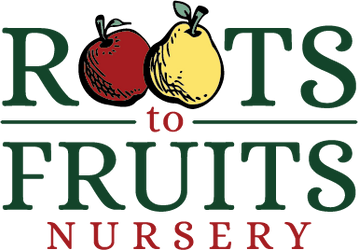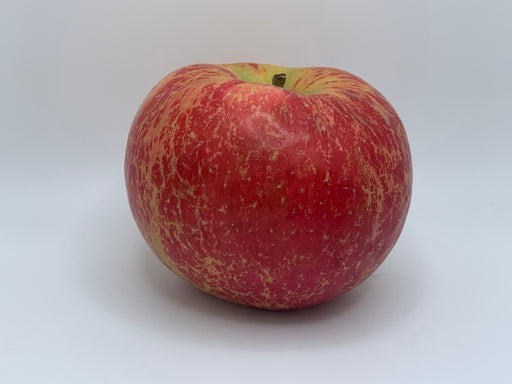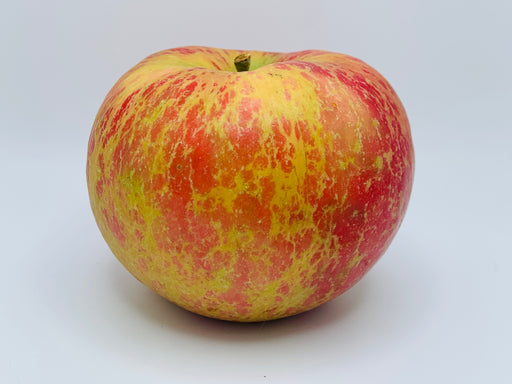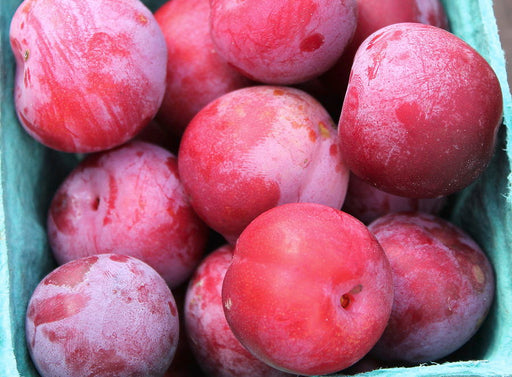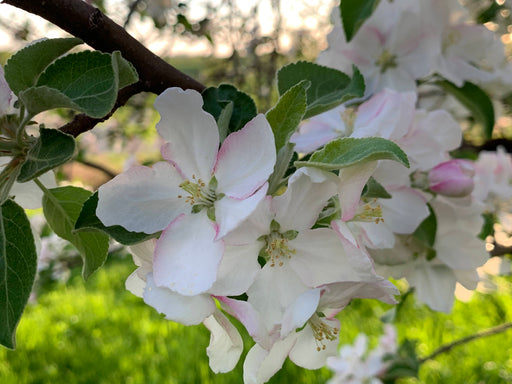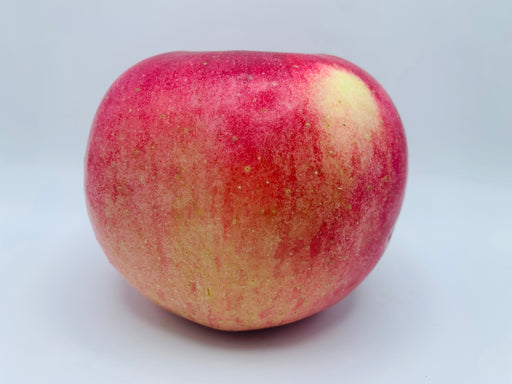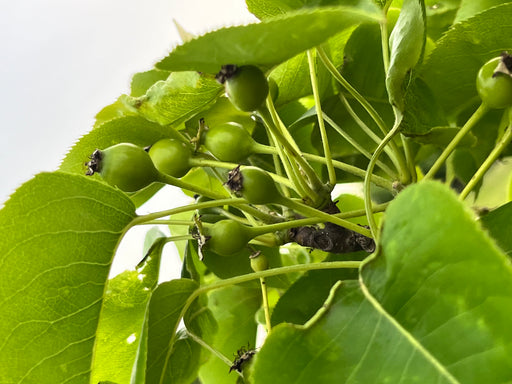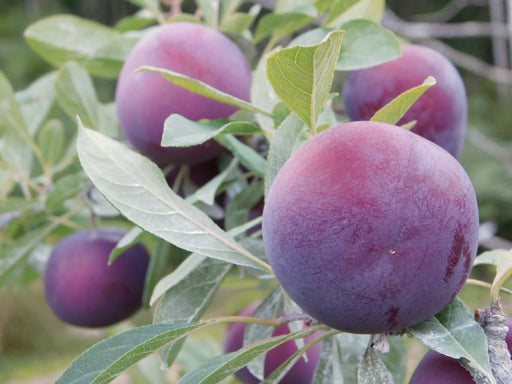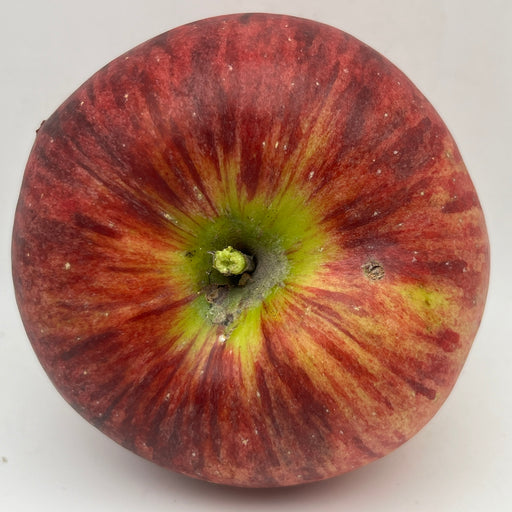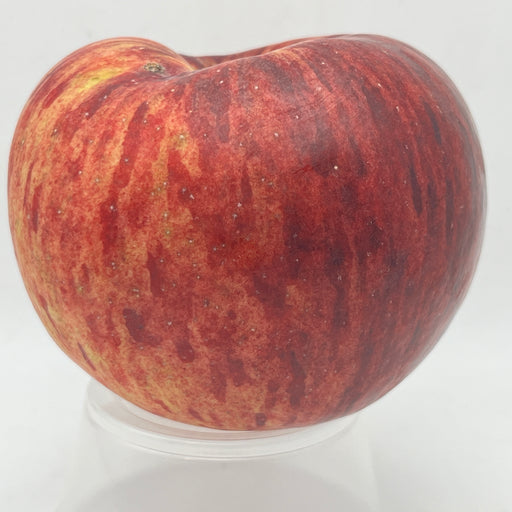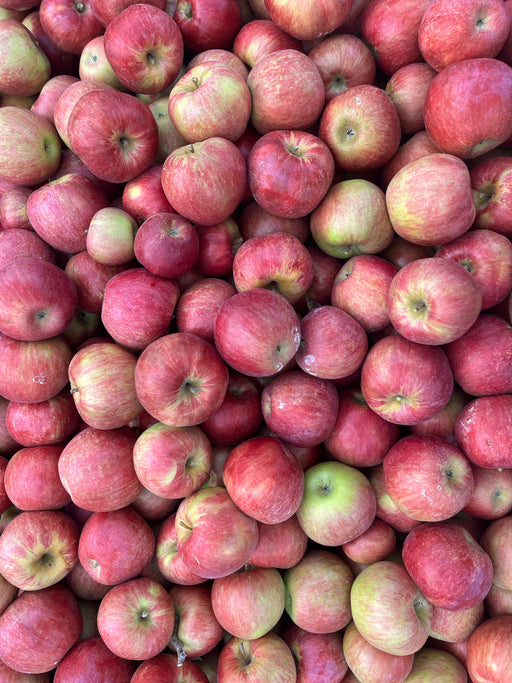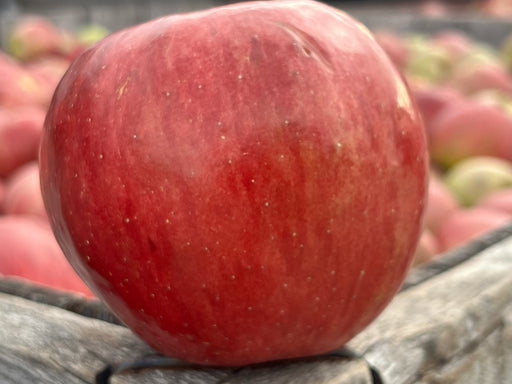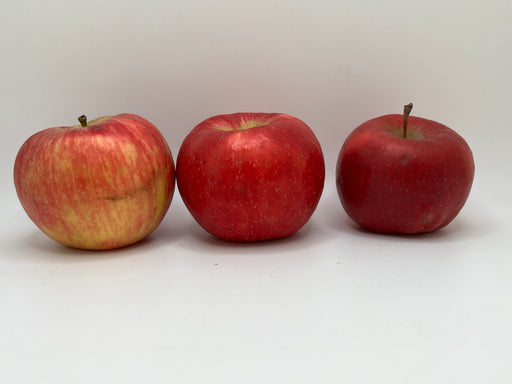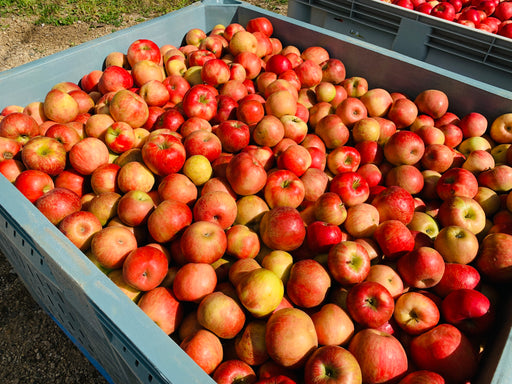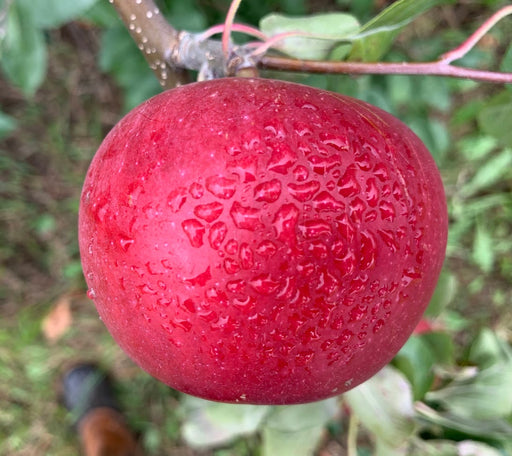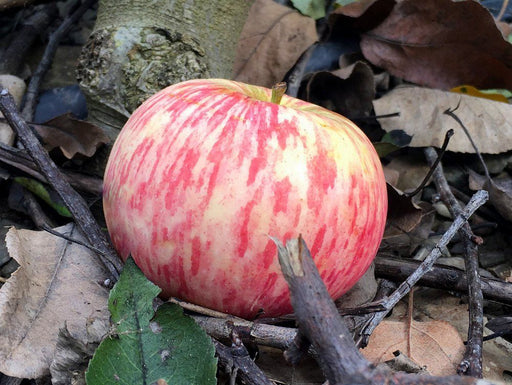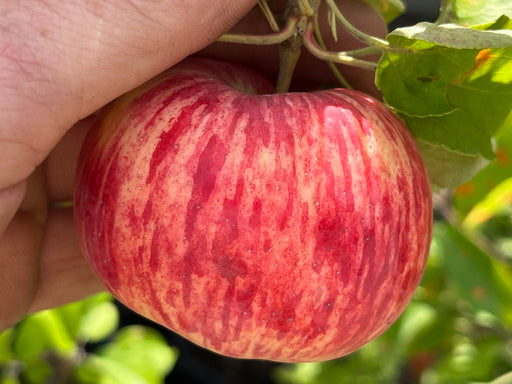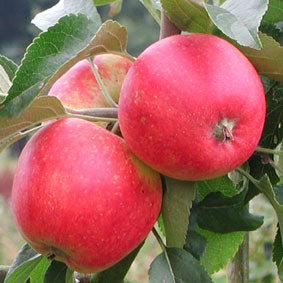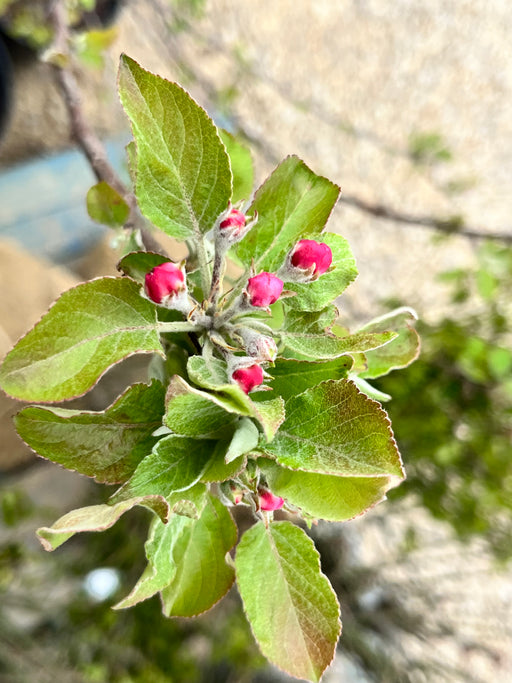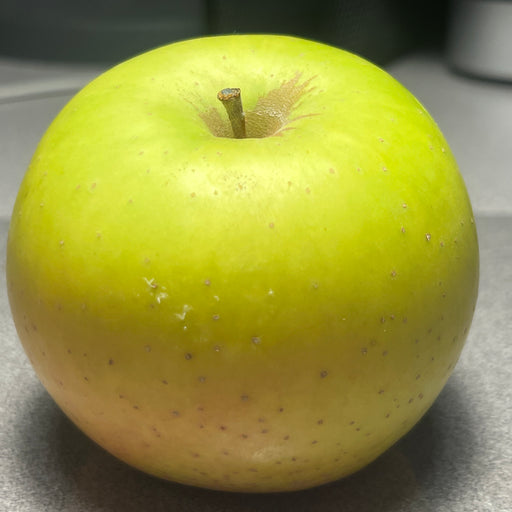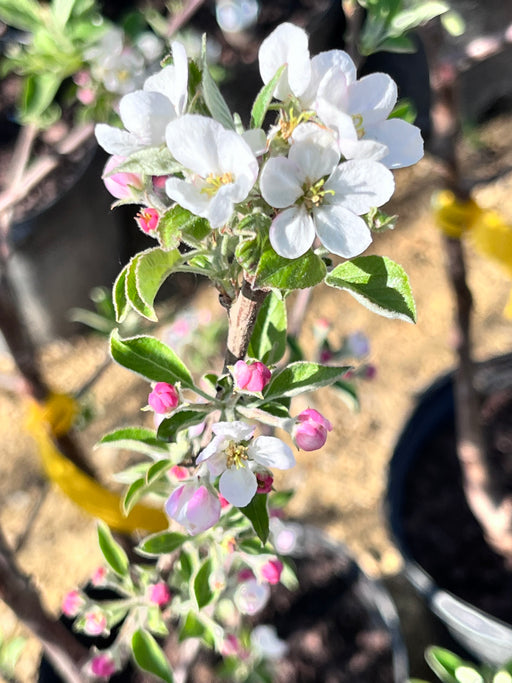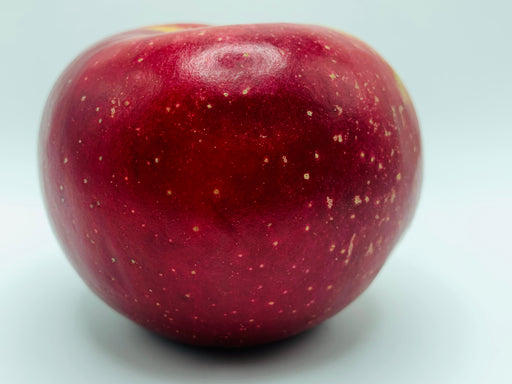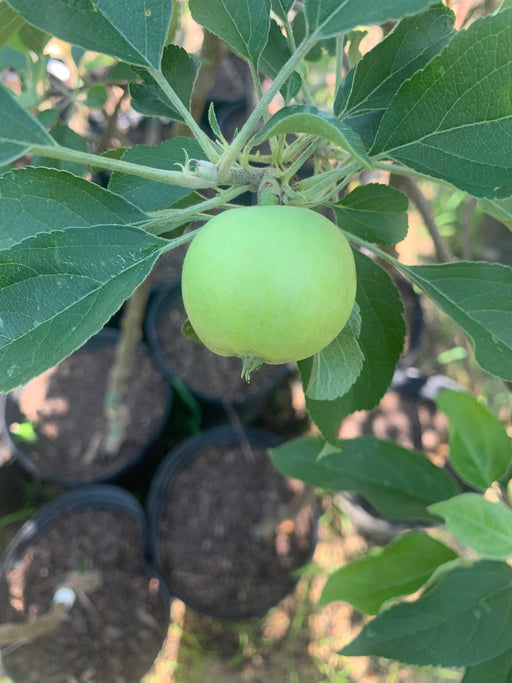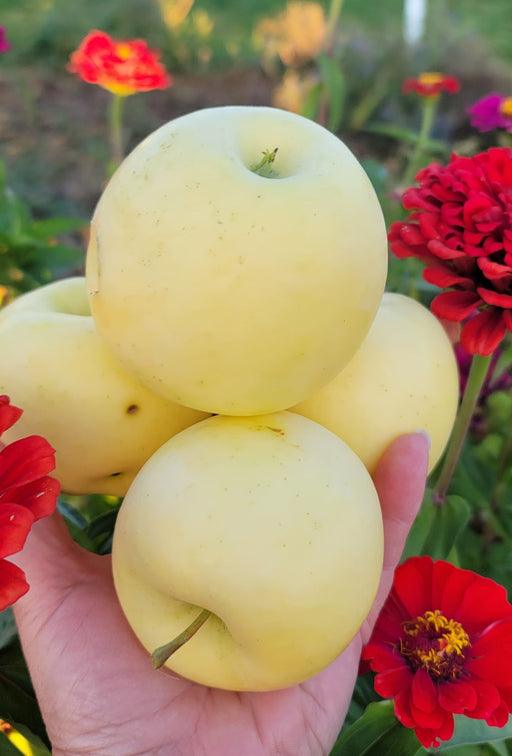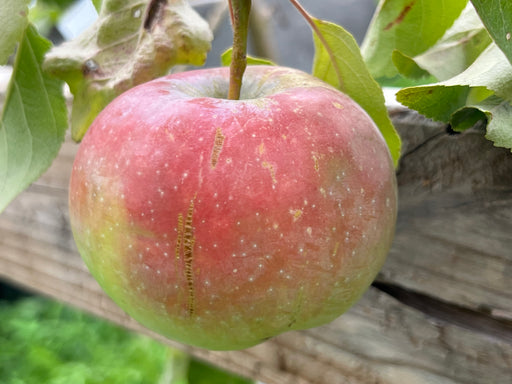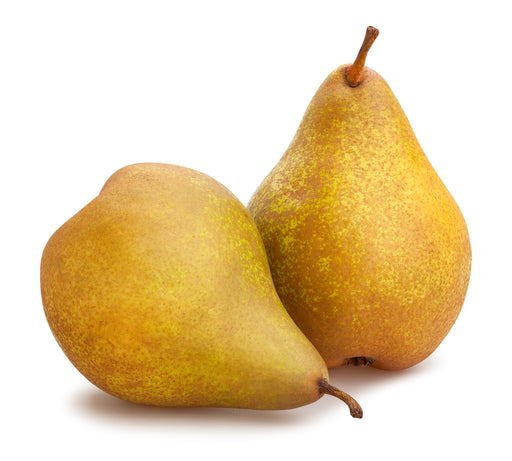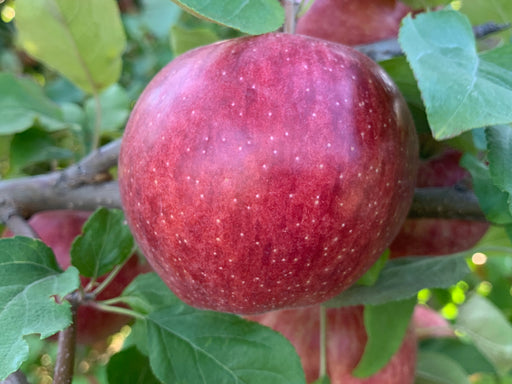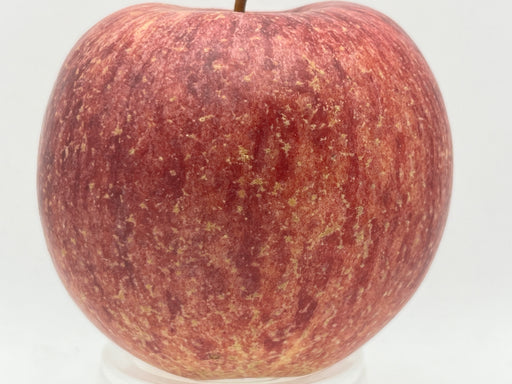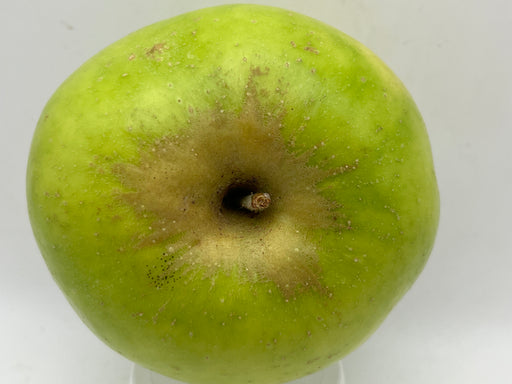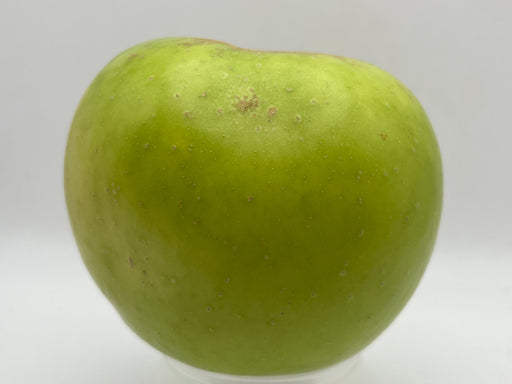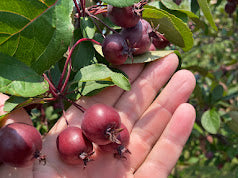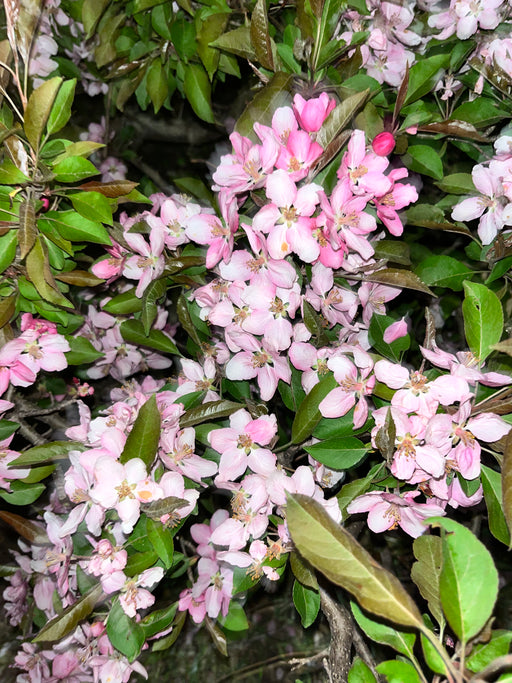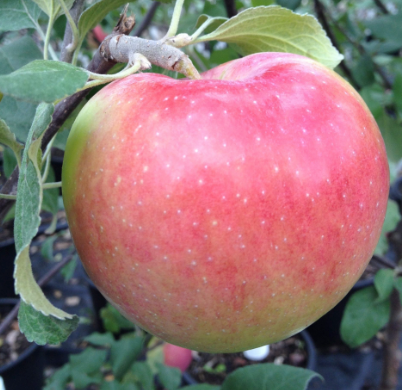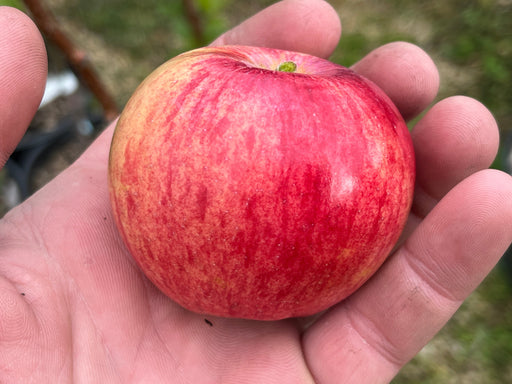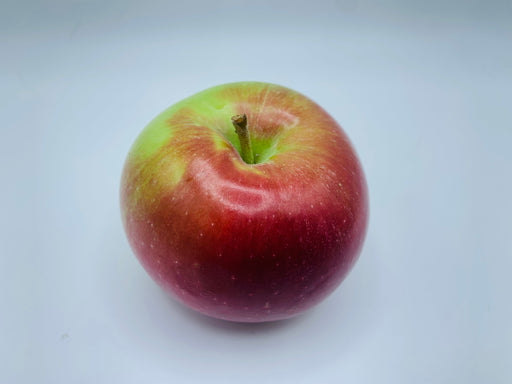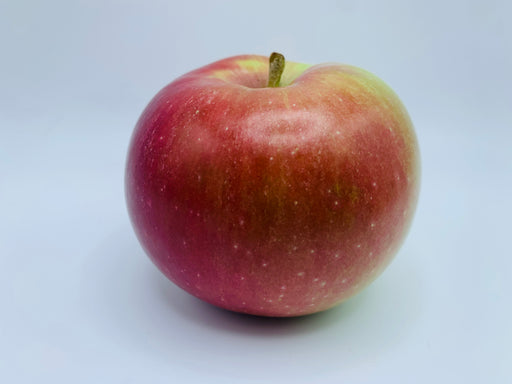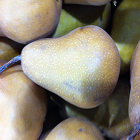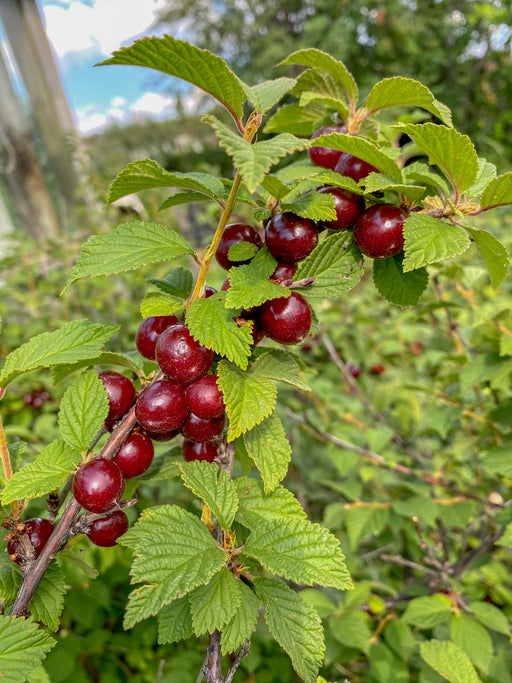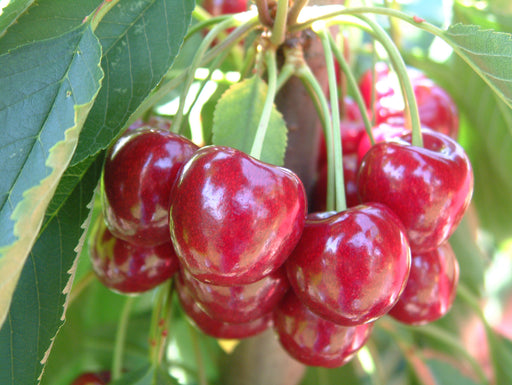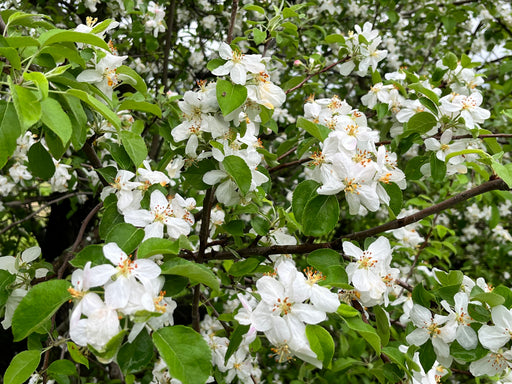Fruit Trees
Our apple trees, like many fruit trees, are propagated by grafting. There are two parts to an apple tree. The scion is the fruiting part of the tree, which gives you the variety of the apple, and the rootstock, which influences the mature size and hardiness of the tree, and determines the time it takes for the tree to fruit. We sell Standard, Semi-Dwarf, Dwarf, and Mini-Dwarf trees that do not require a lot of space and yet, will bear large fruit.
A few key notes on successful planting methods:
- Trees must be planted in well-drained soil
- Six hours of sunlight; full sun preferred
- Stake all trees for the first two years
- Dwarfs must have permanent stakes
- Tree guards should be used
- Plant at least two different apple tree varieties for Cross-Pollination
- Plant disease-resistant trees for less maintenance; we are happy to help make any suggestions you might need
We categorize our apple trees into at least five sizes: Petite, Maiden, Field Ready, Hand Select, and Container depending on the size of the tree. The Petite tree is our smallest graded tree less than 2 years in age; Maiden trees are usually 2 years old and are branchless. These are also called whips and will bear in 2-3 years. A Field Ready tree is 2-3 years old and might have some lateral branching, be thicker above the graft, and will bear in 1-2 years. The Hand Select trees are only about 20% of trees we have and are 3 year old trees, 6-9’ tall and can be heavily branched. You can expect fruiting on a Hand Select tree in about a year.
Honeycrisp Apple Trees
If you've ever heard of an apple- its probably the Honeycrisp. The University of Minnesota introduced this cold hardy apple variety in 1991 and it ...
View full detailsToka Plum Tree
The Toka Plum was created at the University of Minnesota to withstand the colder northern temperatures. Hardy to zone 3, this plum is an excellent ...
View full detailsWolf River Apple Tree
This is an enormous apple. First discovered in 1875 along the Wolf River in Wisconsin- this apple soon became a popular baking apple because you on...
View full detailsBlack Ice® Plum Tree
Plant breeder Brian Smith first developed in River Falls, WI in the early 2000s- the patent filed in 2004- as a cold hardy plum option. First cross...
View full detailsCortland Apple Tree
Created at Cornell University’s Agricultural Station in 1898, the Cortland Apple is a popular tree around the Great Lakes even today. It is now the...
View full detailsSweet Sixteen Apple Tree
This University of Minnesota variety was introduced in 1977 and is a cross between the Northern Spy and MN 447 (Frostbite) Apples. Commercially via...
View full detailsCameron Select Red Honeycrisp Tree
Please see our main Honeycrisp page for a general description. The difference between the Cameron Select and the standard Honeycrisp is a matter of...
View full detailsZestar Apple Tree
Introduced in 1999 by the University of Minnesota as another cold hardy apple. The Zestar, also called Minnewashta, is a cross between the State Fa...
View full detailsDuchess of Oldenburg Apple Tree
This regal apple is named for Grand Duchess Catherine of Oldenburg, sister to Czar Alexander I and originates from the late 17th century in Eastern...
View full detailsPixie Crunch Apple Trees
Pixie Crunch, or Co-op 33, is a 1971 cultivar of the PRI Institute grown at Purdue University. Descended from the Golden Delicious and Red Rome app...
View full detailsHoneygold Apple Trees
Developed at the University of Minnesota Agriculture Research Center by crossing a Golden Delicious with a cold-hardy Haralson. The result was a Go...
View full detailsHaralson Apple Trees
This apple was first bred by the University of Minnesota as early as 1913 and became available to the public in 1923. It is named after one if its ...
View full detailsYellow Transparent Apple Tree
This apple was one of several cold hardy varieties imported from Russia to help with Western Expansion. In the 1870s, as Americans moved into colde...
View full detailsTriumph™ Apple Tree
First available in 2021, the Triumph™ apple is a recent University of Minnesota variety. A cross between the Honey Crisp and Liberty apples, the T...
View full detailsBosc Pear Tree
Also known as Beurré Bosc Pear originating from France in the early 1800s; Louis Bosc named this pear describing its buttery texture. It is truly b...
View full detailsCameo Apple Tree
Discovered as a chance sapling in 1987 between Red Delicious and Golden Delicious, the Cameo apple’s rise to fame is a quick one. Though we cannot ...
View full detailsNorthwest Greening Apple Trees
N.W. Greening is a Wisconsin Native! Jasen Hatch of Iola, WI crossed a Golden Russet with an Alexander in 1849- the seedlings of the new apple were...
View full detailsWhitney Crabapple Tree
A.R. Whitney of Whitney Nursery first grew this crabapple from seed in 1865 and it is one of the only crabapples one can eat off the tree. It is pr...
View full detailsPrairie Magic Apple Tree
The Prairie Magic Apple is a wonderfully cold hardy variety hailing from Jeffries Nurseries in Neepawa, Mantioba. Wilford Drysdale crossed a Goodla...
View full detailsSpartan Apple Tree
Introduced in 1936 by R.C. Palmer from the Federal Agriculture Research Station (now the Pacific Agri-Food Research Centre) in Summerland, British ...
View full detailsFlemish Beauty Pear Trees
Originally discovered in Deftinge, Belgium during the Napoleonic Wars of 1810 by a Belgian pear 'enthusiast named Jean-Baptiste Van Mons. Van Mons ...
View full detailsJoy Bush Cherry Plants
A tart bush cherry growing to less than 4' tall. Plant produces cherries along the length of the branch that ripen in late September- this is the l...
View full detailsJan Bush Cherry Plants
A tart bush cherry growing to less than 5' tall. Plant produces cherries along the length of the branch that ripen in late August to early Septembe...
View full detailsState Fair Apple Tree
This apple ripens around the time of the Minnesota State Fair, hence the name, and is the parent of another earl variety also of UofM: Zestar. Deve...
View full details